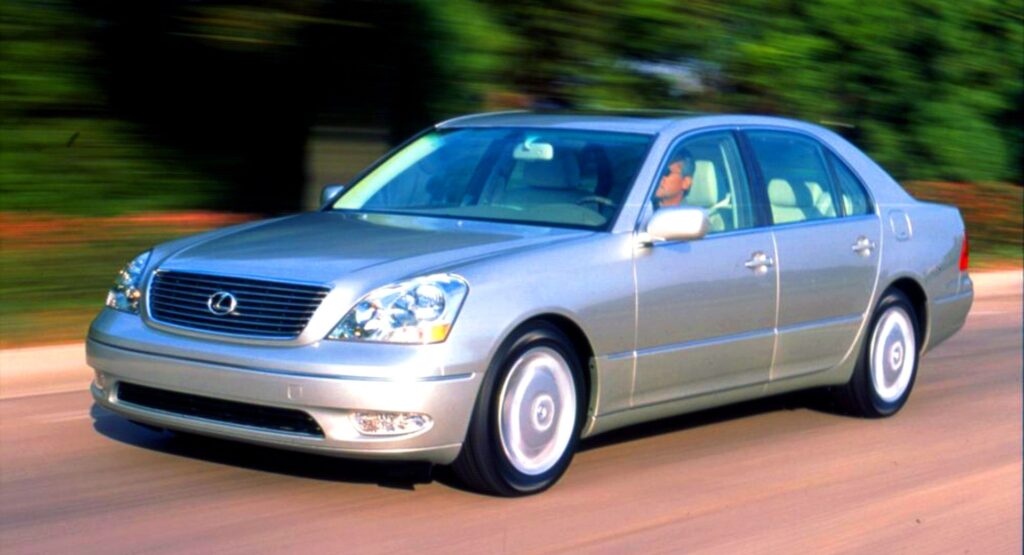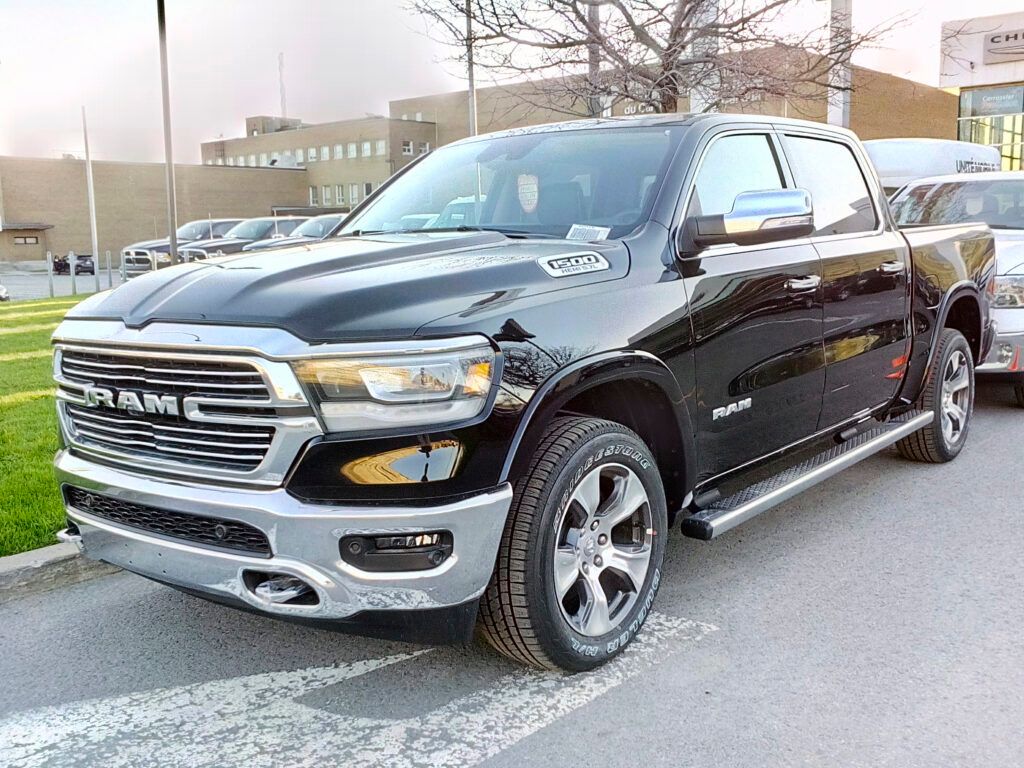
Selling your car to a dealership can often feel like navigating a complex maze, where the promise of convenience is frequently tempered by the fear of leaving money on the table. While the allure of a quick, hassle-free transaction is undeniable, many car owners mistakenly believe they must settle for a significantly lower offer than their vehicle truly deserves. This perception, however, is far from the whole truth. With the right preparation, knowledge, and strategic approach, you can transform a typical dealership sale into a highly profitable endeavor, potentially adding hundreds, or even thousands, to your final payout.
Our comprehensive guide, rooted in extensive automotive industry knowledge and consumer-focused insights, is designed to empower you. We understand that whether you’re upgrading to a newer model or simply looking for cash, getting the best deal requires an informed strategy. This article will equip you with the actionable steps needed to maximize your car’s value, avoid common pitfalls, and negotiate with unwavering confidence. By understanding what dealerships look for, having your documents in order, and knowing your car’s true worth, you can ensure a smooth, stress-free experience that culminates in a fair, and even exceptional, offer.
Forget the notion that selling to a dealer means accepting less. We’re here to show you how to leverage preparation, precision, and a bit of savvy to walk away with the highest possible offer, often completing the entire transaction before your next coffee break. From meticulous detailing to strategic pricing research and understanding dealer psychology, these steps are your roadmap to a successful and financially rewarding car sale.
1. **Decide Whether Selling to a Dealership Is Your Best Move**Before you dive into the specifics of preparing your car for sale, it’s crucial to first determine if selling to a dealership aligns with your priorities. There are typically three main avenues out of the driveway: selling your car to a dealership for a cash offer, using it as a trade-in on your next ride, or listing it privately. The fundamental equation boils down to time versus money, and understanding this trade-off is the initial step toward making an informed decision that suits your individual needs.
Dealerships, by their nature, pay wholesale prices, which means their offer will generally be about 5-15% under the private-party value, primarily due to the reconditioning costs they anticipate. However, this lower payout is often balanced by significant advantages such as same-day payment, the dealer handling all the cumbersome DMV and lien paperwork, and eliminating the need for you to meet with strangers for test drives. This speed and convenience can be incredibly valuable, especially if you’re facing a relocation, anxious about loan payoff logistics, or own a vehicle with a particularly narrow buyer pool.
To help clarify if a dealer sale is your best option, ask yourself a few quick self-check questions. Do you need cash within 48 hours? Are you uncomfortable hosting test drives at your home? Does your car show 100,000+ miles or have significant cosmetic scars? Do you still owe money on the car and prefer the dealer to handle the payoff directly? Are you okay with potentially giving up a few hundred dollars for a completely zero-hassle transaction? If you answered yes to most of these, then the convenience offered by a dealership often outranks the pursuit of squeezing every last dollar through a private sale.
Furthermore, if you still owe money on your vehicle, selling to a dealership can significantly streamline the process. Many people assume you must purchase a vehicle from a dealer to sell one there, but that’s not the case. The dealer can typically cut a check directly to your lender, apply any positive equity towards your pocket, or even roll negative equity into a new loan if you’re trading in. This seamless handling of loan payoffs eliminates a major logistical headache for sellers and helps you get out the door with cash much faster, making a dealer sale a pragmatic choice for many.
Read more about: 15 Iconic Nameplates: Classic Car Brands Fueling the Electric Revolution

2. **Prep Your Car Like a Pro: Clean, Fix, and Present for Maximum Appeal**First impressions are paramount when selling your vehicle to a dealership; they can literally steer the appraisal number. Dealers mentally subtract reconditioning costs the moment they assess your car, so dedicating even a single hour to its appearance can add hundreds to your offer and significantly expedite the “sell my car to a dealership” decision. This isn’t just about superficial shine; it’s about signaling that the vehicle has been well-maintained and cared for, boosting its perceived value.
Start with low-cost detailing steps that consistently pay off. Hand-wash your car thoroughly, and if needed, use a clay bar to remove embedded contaminants, followed by a $15 spray wax for an instant, impressive gloss. Inside, vacuum all carpets, crevices, and the trunk, then wipe down vinyl surfaces with a non-greasy protectant. Don’t forget to clean the wheels and dress the tires, as shiny rubber subtly signals care and attention to detail. Degrease door jambs and engine plastics – appraisers will open everything, and a clean engine bay suggests a well-cared-for mechanical heart. Finally, remove all personal items, decals, and lingering air fresheners, aiming for a neutral, ready-to-sell scent.
When it comes to repairs, be strategic. Some minor fixes are absolutely worth doing, while others are best skipped. Immediately replace burnt bulbs and worn wiper blades, top up all fluids, and clear any minor dash warnings. Addressing small chips or cracks under 6 inches with an inexpensive repair kit can also be a worthwhile investment. These small, visible improvements suggest a car that is fully functional and well-maintained. However, avoid major expenses like transmission rebuilds, suspension overhauls, or extensive cosmetic paint work if the cost outweighs 50% of the likely value bump. Dealers have access to wholesale repair costs that you don’t, making these large investments uneconomical for you as a seller.
Beyond physical presentation, gather visual proof with high-quality photos. Snap well-lit, landscape shots of each side of the vehicle, the interior, the odometer, and any unique options packages. Emailing these images ahead of your visit allows dealership managers to pre-appraise your car, potentially shaving negotiation time off your visit and helping to anchor the initial offer at a higher point. This proactive step demonstrates your seriousness as a seller and provides concrete evidence of your vehicle’s condition, strengthening your position before you even step onto the lot.
3. **Research Your Car’s True Market Value Before You Walk In**Walking into an appraisal appointment unprepared with your car’s market value is a surefire way to inadvertently undersell your vehicle. A swift and thorough pricing reconnaissance arms you with a realistic, evidence-backed number the moment a dealer presents their offer. This essential preparation is not just about having a number in mind; it’s about establishing your definitive walk-away point. If the dealer’s initial figure falls below your meticulously researched range, you’ll have the confidence and data to either push back effectively or explore other selling avenues.
To gain a comprehensive understanding of your vehicle’s worth, stack data from at least three credible online sources. Trusted valuation tools like Kelley Blue Book (KBB) and Edmunds, along with NADA Guides, are excellent starting points. These platforms allow you to input your car’s make, model, year, mileage, and condition to generate an estimated value for both private sale and trade-in. For an even more accurate assessment, be honest about your car’s condition, and whenever possible, provide its Vehicle Identification Number (VIN) or license plate number rather than just basic make and model information.
Beyond these established valuation sites, broaden your research by checking recent Craigslist or Facebook Marketplace listings for similar vehicles within a 100-mile radius of your location. This offers a real-world snapshot of what private sellers are currently asking for cars like yours, providing invaluable context for the open market. Once you’ve gathered this data, jot down the wholesale (trade-in) low, the retail high, and a realistic midpoint that represents a fair dealer offer. This composite spread will become your solid negotiation bracket, giving you clarity and confidence in discussions.
Remember to adjust these baseline values for specific factors related to your car’s condition, mileage, trim level, and local demand. For instance, reduce the estimated value by 5-10% for significant dents, a persistent smoke odor, or excessively worn tires. Conversely, you might bump the value slightly for exceptionally low mileage, desirable features like all-wheel drive (AWD), or a popular technology package. Regional tastes also play a significant role; a rust-free pickup truck will fetch a much higher price in a demand-heavy area like Buffalo compared to a locale like Phoenix. Identifying specific timing advantages can further optimize your sale. Tax-refund months, typically February through April, and month-end quota pushes by dealerships can often create opportunities to squeeze extra dollars out of a buyer. Consider bringing in your car before winter if it’s an AWD vehicle, or just before summer if it’s a convertible, to capitalize on peak seasonal demand and maximize your offer.
Read more about: Mastering Car Title Security: 13 Essential Strategies to Safeguard Your Vehicle and Finances from Deceptive Scams

4. **Gather All Essential Paperwork and Information Dealers Need**Nothing derails a potential same-day car sale faster than missing paperwork. When you aim to sell your car to a dealership quickly and efficiently, ensuring your document stack is complete and organized is the first thing to check. Arriving fully armed with all necessary paperwork not only shortens the appraisal process but also sends a clear signal to the dealer that you are a serious and prepared seller. This level of preparedness can even subtly bump up the offer, as the buyer knows the transaction won’t get bogged down in bureaucratic limbo.
Think of it like boarding a flight: no ID, no seat. Similarly, no title, no check. Before you even request quotes, pull together these must-have legal documents to ensure there’s zero back-and-forth once a dealer is ready to make a deal. These include your vehicle title (or electronic title number) clearly in your name, a valid driver’s license or state ID for all titled owners, your current registration card or temporary permit, and a lien release letter if you’ve paid off a loan within the last 30 days. These items are the fundamental requirements for any legal car sale.
Beyond the mandatory legal documents, there are also supporting materials that can significantly boost confidence and, consequently, your car’s perceived value. These include maintenance receipts showcasing a history of consistent oil changes, timing-belt service, and any recall repairs, which provide tangible proof of meticulous care. The original window sticker or build sheet can verify all factory options, ensuring the dealer understands the full value of your vehicle’s features. Furthermore, having two sets of keys or fobs, all owner’s manuals, cargo covers, and any charging cables (for EVs) demonstrates completeness. A clear CARFAX or AutoCheck report, printed if you already have access, adds a layer of transparency and trust, allowing the dealer to quickly verify your car’s history.
If you still owe money on your car, there’s specific paperwork you’ll need to bring to facilitate a smooth transaction. This includes a 10-day payoff quote from your lender, which you can typically obtain by calling them directly or through their banking app. You’ll also need your account number and the overnight payment address for your lender, along with proof of your monthly payment amount and its due date. Having the payoff letter readily available allows the dealer to finalize the numbers on the spot. They will directly cut a check to your lender, then apply any positive equity directly to you, or if applicable, roll any negative equity into a new loan if you’re trading in. This preparedness ensures the transaction concludes swiftly, getting you out the door with your cash that much faster.
Read more about: Mastering Car Title Security: 13 Essential Strategies to Safeguard Your Vehicle and Finances from Deceptive Scams

5. **Understand What Dealerships Look For When Buying Used Cars**To truly maximize your car’s value when selling to a dealership, it’s essential to shift your perspective and understand what factors influence their offer. Dealerships aren’t just looking for any car; they’re looking for vehicles they can sell quickly and profitably. Knowing what a top-rated used car dealership considers during their appraisal process can help you anticipate their assessment, highlight your car’s strengths, and avoid any unpleasant surprises during negotiations. This insider knowledge is a powerful tool in getting the best possible trade-in offer.
One of the biggest factors determining your vehicle’s trade-in value is its overall condition. Dealers conduct a thorough inspection, scrutinizing both the exterior and interior for wear. This includes dents, scratches, rust, and upholstery damage, all of which can visibly lower their offer. They also pay close attention to mechanical issues: if the engine, transmission, or brakes require significant work, the dealership will factor these repair costs into their offer as a deduction. Mileage is another critical component, with cars sporting lower mileage typically fetching higher offers, as they generally exhibit less wear and tear and promise a longer lifespan to the next buyer. Fixing minor cosmetic issues and ensuring your car runs smoothly before bringing it in can significantly improve their initial assessment.
Market demand heavily influences how much a dealership is willing to pay. Dealerships prioritize cars that are currently in high demand within their specific market. Factors like the make and model popularity are crucial; a best-selling or fuel-efficient model will inherently be more valuable. Seasonal trends also play a role: convertibles and sports cars naturally sell better in warmer months, while SUVs and trucks see peak demand during fall and winter. Furthermore, local market needs are key; some regions might have a stronger preference for sedans over trucks, or hybrids over gas-powered cars. If your car aligns with current market demand, dealerships are much more likely to offer a competitive and attractive price, so understanding these trends can be a strategic advantage.
A well-documented service and maintenance history is invaluable. Dealerships look for proof of consistent care, such as regular oil changes and routine tune-ups, which reassures them that the vehicle has been responsibly maintained. A clean vehicle history report, free of major accidents, significantly increases value, as it mitigates concerns about underlying structural damage. Evidence of recent repairs, like new tires, brakes, or battery replacements, can also boost your offer by demonstrating that critical components are up-to-date and won’t require immediate investment from the dealership. Providing a detailed service record can act as compelling justification for a higher trade-in price.
Finally, the title and ownership status of your car are meticulously checked before a dealership can finalize any purchase. It is paramount that the title is clear, meaning there are no liens or outstanding loans against the vehicle. Your registration must also be up to date to avoid any processing delays. You will also need a valid ID for proof of ownership, ensuring a legal and fraud-free transaction. If your car is still under a loan, bringing accurate payoff details from your lender allows the dealership to handle the remaining balance directly, streamlining the entire process. Additionally, dealerships will pull a CARFAX or AutoCheck report to examine past accidents, the number of previous owners (fewer often indicates better condition), and the title status; salvage or rebuilt titles drastically lower a car’s value. Reviewing your own vehicle’s history report beforehand ensures you know exactly what the dealer will see.
Read more about: Are You Driving a ‘Show-Off’ Vehicle? The Top 10 Car Brands Prone to Speeding Tickets

6. **Shop Multiple Offers Quickly—Online and In-Person**Treating your vehicle like any other valuable commodity is a mindset that directly translates to a better deal. The more potential buyers you engage, the higher the clearing price you are likely to achieve. Aim to gather three to five competitive bids for your car within a concise 48-hour window. This tight timeframe is crucial for preventing mileage accumulation, mitigating market swings, and preserving your negotiation leverage effectively.
Beginning your quest for offers with instant online cash-offer platforms is a smart move. Simply input your Vehicle Identification Number (VIN), current mileage, and an accurate description of its condition. In mere seconds, a conditional price will be generated. Should you accept this offer, you will then schedule a quick inspection at a partner dealership or buying center, where your car’s condition is verified before a check is promptly issued. The main advantage here is lightning speed and a guaranteed floor price, though it’s important to be accurate in your description to avoid on-the-spot deductions for undisclosed scratches or warning lights.
Beyond online platforms, make it a point to visit various types of dealerships. Franchised stores, for example, often offer top dollar for late-model vehicles of the same brand, especially if they can certify them for resale. Independent dealerships, on the other hand, might outbid on older, high-mileage units because their reconditioning costs are typically lower. For unique vehicles, niche buyers—such as sports car, diesel, or electric vehicle specialists—can sometimes offer even more, recognizing specialized demand.
Remember, obtaining several quotes is akin to gathering bids for any significant service, like hiring a plumber. Most car dealers will honor their quoted price for several days, giving you time to shop around. Don’t hesitate to visit dealers in different geographical areas to capitalize on varying market preferences. Leveraging one dealer’s offer to secure a higher bid from another is a common and effective strategy. This broad approach ensures you’re not leaving money on the table.
Casting a wide net for offers ultimately means more money in your pocket. Whether you’re considering a private sale, an online-only auto retailer, or a traditional dealership, seeking bids from multiple sources is always a good idea. Unless you’re paying a listing fee on a private sale site, it costs nothing to explore various options. This strategic effort dramatically increases your chances of finding a buyer willing to pay the most for your vehicle.

7. **How to Negotiate the Best Offer**Negotiating with a dealership might seem daunting, but it doesn’t have to be. With the right approach, you can significantly enhance your car’s value and secure a highly favorable deal. Mastering how to present your vehicle, compare diverse offers, and confidently challenge lowball figures will firmly position you to get the maximum possible price when selling to a dealership.
Before you even step foot into a dealership for a direct negotiation, make it a priority to gather pricing estimates from a multitude of reliable sources. Online valuation tools, such as Kelley Blue Book and Edmunds, provide an excellent baseline value for your vehicle. Additionally, instant cash offers from dealership websites or specialized car-buying services can serve as powerful leverage in your discussions. Accumulating multiple dealership appraisals helps you effectively compare offers and pinpoint the most competitive one available. Walking into any negotiation armed with such competing offers immediately puts you in a position of control and strength.
It is almost always a mistake to accept the first offer presented by a dealership. Dealerships typically initiate negotiations with a lower offer, fully anticipating a counter. Instead of agreeing immediately, politely present your counteroffer, substantiating it with the market research you’ve conducted. If your car is particularly popular or in exceptionally high demand, emphasize this during your discussion. Do not hesitate to ask for an itemized breakdown of how they calculated their offer. If they prove unwilling to budge, gently remind them that you have other quotes and are prepared to explore alternative selling avenues.
A well-maintained vehicle inherently justifies a higher price, so be sure to highlight your car’s best features. If your car boasts lower mileage than comparable models, make this a key point of discussion. Provide documentation of any recent maintenance or upgrades, such as new tires or a battery replacement, which demonstrate a proactive approach to upkeep. An accident-free history, verifiable through a clean CARFAX or AutoCheck report, significantly adds to your car’s appeal. Presenting comprehensive service records and receipts strengthens your argument for a more robust offer.
If the dealership reaches a point where they seem unwilling to increase their cash offer, consider negotiating for additional benefits. These could include potential tax savings if you are trading in your vehicle for another purchase, which can be substantial in some states. You might also negotiate to have processing or documentation fees waived, leading to direct savings. Sometimes, securing faster payout terms to receive your cash more quickly can be just as valuable as a slightly higher monetary offer. Ultimately, knowing when to walk away is a critical negotiation tactic. Do not be afraid to exit the discussion if the dealership is unwilling to meet a fair price based on your extensive research. Red flags include unreasonably low offers, high-pressure tactics, or a refusal to transparently explain their valuation. A dealership that genuinely values your business will work collaboratively to reach a fair and mutually satisfactory agreement.
Read more about: Unlock the Best Deals: 12 Expert-Backed Ways to Negotiate Your Gym Membership

8. **Time Your Sale for Maximum Profit**When it comes to selling your car, timing truly is everything. The strategic timing of your sale can be the pivotal factor distinguishing between securing a top-dollar offer and settling for significantly less. Dealerships weigh several key elements when formulating an offer, including current market demand, prevailing seasonal trends, and the specific condition of your vehicle. A keen understanding of these dynamics will empower you to time your sale precisely for maximum profit.
It is highly advantageous to sell your car when used car prices are generally elevated. Market fluctuations can dramatically impact how much dealerships are prepared to pay. Optimal selling periods often align with times of high demand, such as when new car production faces slowdowns or supply chain disruptions limit new inventory. Economic downturns can also spur greater interest in used cars over new ones. Furthermore, spikes in gas prices frequently increase demand for fuel-efficient vehicles. Diligently monitoring these overarching market trends allows you to pinpoint and capitalize on the most profitable selling windows.
Avoiding the sale of your car right after it necessitates costly repairs is a crucial strategy. A vehicle that requires significant mechanical or cosmetic work will almost invariably see its trade-in value reduced. Aim to sell your car before major issues like brake replacements, timing belt service, or substantial engine problems become unavoidable. Similarly, replacing tires can be an expense dealers will deduct from their offer. The appearance of warning lights on your dashboard can signal expensive underlying fixes and significantly dampen buyer interest. Selling your car proactively, before it incurs major repair needs, helps ensure you secure a much better deal. Moreover, market conditions can change quickly, so if you procrastinate, an offer received just a few days prior may no longer be valid. Part of the appeal of selling to a dealer is the streamlined process and quick transaction, making swift action important.
Consider the influence of seasonal demand on your car’s value, as this can vary significantly based on vehicle type. Convertibles and sports cars typically command higher prices during the spring and summer months when buyers are eager for open-air driving. Conversely, SUVs and trucks experience peak demand during the fall and winter, especially in regions prone to challenging weather. Everyday family sedans and fuel-efficient cars tend to maintain a more consistent value throughout the year. Strategically selling your specific type of car during its most desirable season can substantially maximize the offer you receive.
For those considering a trade-in, acting before a new model year is released is a financially astute move. Vehicle depreciation accelerates rapidly once a newer version of your car hits dealership lots. To mitigate this value erosion, aim to sell or trade in your car before the next model year becomes widely available. Keep a close eye on manufacturer release schedules to optimally time your sale. Also, pay attention to any significant redesigns, as these can render older models considerably less valuable. Selling just prior to these anticipated depreciation spikes helps you lock in the best possible price. Additionally, leveraging tax benefits can amplify your overall gains. In many states, trading in your vehicle allows you to pay sales tax only on the difference between the trade-in value and the price of your new car. Selling during year-end dealership promotions or when dealerships are actively seeking inventory can further enhance your trade value through these tax advantages, ensuring you maximize both profit and savings.
Read more about: Maximizing Your EV Savings in 2025: A State-by-State Guide to the 14 Best Incentives and Rebates

9. **Special Considerations for Specialty or Classic Cars**Not all cars fit neatly into the standard appraisal box, especially if you’re considering selling a unique or classic vehicle. These types of cars often require a more tailored approach to ensure you’re connecting with the right buyer who truly appreciates their distinct value. A standard dealership might not be the ideal venue for such a specialized sale.
If you are selling a specialty or classic car, understanding where to take it is key. For instance, the mint 1970 Chevrolet Monte Carlo that your father willed to you might not pique the interest of a BMW dealership. However, a Chevrolet dealership, particularly one with a heritage section or a penchant for displaying iconic models, might be very keen to acquire such a vehicle for their showroom. The appropriate venue for sale fundamentally depends on the specific car you’re offering and what type of inventory the dealership prioritizes. If you own a rare or exotic car, collaborating with a dealership that specializes in that particular type of vehicle is often the most effective path to a successful sale.
Whatever your unique situation, do not hesitate to inquire about interest from various dealers; the worst outcome is simply a polite refusal. It is important to remember that dealerships, unlike private-party buyers, are looking for vehicles they can sell and that fit their business model. Finding a dealer whose current inventory or client base aligns with your vehicle’s unique attributes can significantly increase their enthusiasm and, consequently, the offer they present. Moreover, specialized platforms and marketplaces often exist specifically for these distinctive vehicles.
For those seeking to maximize their reach for a classic car, consider utilizing platforms explicitly designed for such sales. As a helpful tip, our sister site Autotrader provides a dedicated Classic Cars marketplace where you can list your unique vehicle. This specialized approach allows you to directly tap into a community of enthusiasts and dedicated collectors, who often possess a deeper understanding and appreciation for your car’s distinct historical and market value, potentially yielding a much better offer than a general dealership.
Read more about: Beyond the Malaise: 15 Rare American Cars from the 1970s That Defied Expectations

10. **Avoid Common Pitfalls for a Seamless Sale**Even with meticulous preparation and astute negotiation tactics, the process of selling your car can still encounter unexpected difficulties if you fall victim to easily avoidable mistakes. Being fully aware of these common pitfalls is just as crucial as knowing the right steps to take. Proactive avoidance ensures a smoother, more profitable, and ultimately stress-free transaction with any dealership. Many of these frequent errors can be prevented with just a little foresight and adherence to proven strategies.
One of the most frequent missteps sellers make is underestimating the profound impact of their car’s presentation. Failing to thoroughly clean, detail, and address even minor cosmetic or mechanical fixes before an appraisal can lead dealerships to mentally deduct anticipated reconditioning costs directly from their offer. Always remember that first impressions are paramount; a vehicle that is meticulously presented signals a history of diligent care and can significantly elevate its perceived value, making it more desirable to a buyer.
Another significant pitfall involves approaching an appraisal without a crystal-clear understanding of your car’s true market value. Without conducting comprehensive research from multiple credible sources, you run the substantial risk of accepting a lowball offer because you lack an evidence-backed walk-away point. Furthermore, limiting your outreach to only a single offer means forfeiting the invaluable leverage that comes from competitive bidding. Always strive to secure bids from at least three to five sources to ensure you are receiving the most competitive price possible for your vehicle.
Missing essential paperwork, such as your vehicle title, current registration, or accurate loan payoff details, represents another critical pitfall that can instantly derail a same-day sale. Such omissions signal a lack of preparedness to the dealership, potentially leading to frustrating delays or even prompting them to reduce their offer due to the additional administrative hassle. Similarly, neglecting the influence of seasonal demand or attempting to sell your car immediately after it requires major, costly repairs can drastically diminish its overall value. Strategic timing, as previously discussed, plays an indispensable role in maximizing your profit.
Finally, a prevalent mistake among many sellers is accepting the dealership’s initial offer without attempting any negotiation, thereby leaving potential money on the table. Dealerships fully expect to engage in negotiation, so politely countering and confidently highlighting your car’s distinct strengths is an absolutely vital step. Conversely, once a fair offer is on the table, procrastinating too long can also be detrimental. Market conditions for used cars can shift with surprising rapidity, and an offer that is valid and attractive today might no longer hold the same value tomorrow. This underscores the importance of making swift, yet well-informed, decisions.
**Conclusion**
Read more about: Buyer’s Remorse on Wheels: 6 Sedans Owners Wish They Could Erase from Their Driveways
Selling your car to a dealership no longer has to be an exercise in guesswork or a pathway to settling for less. By diligently applying these 10 straightforward steps—from meticulously preparing your vehicle and understanding its true market worth to strategically shopping for offers and mastering negotiation—you empower yourself to secure an exceptional deal. This comprehensive approach ensures not only a quick, hassle-free transaction but also guarantees you walk away with significantly more money than you might have initially imagined. Embrace this informed strategy, and transform your car sale into a truly rewarding experience, proving that a little preparation truly goes a long way in achieving top dollar for your vehicle.





